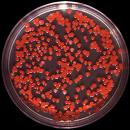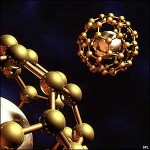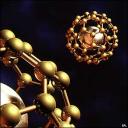– An excellent piece from The Automatic Earth; a Blog I’ve just started following.
= = = = = = = = = = = = =
Cyclical terms like “recession” and “depression” are looking less appropriate by the day. It’s like calling the period between the fall of Rome and the Renaissance a “depression”.
I know the our situation is vastly different from the state of the world in Roman times, but the idea that we could be on the brink of a fundamental reset of civilization is intriguing, to say the least.
I’ve been convinced for several years that we are looking at the convergence of a set of wicked interlocking global problems — ecological problems (climate chaos, the death of the oceans, fresh water shortages etc.), energy shortages due to fossil fuel depletion, and overpopulation with the resulting pressure on the global food supply. This convergence is happening under the umbrella of the current global financial collapse that constrains our ability to respond to any of these problems individually, let alone any further problems that might emerge from interactions between them.
This unfortunate collision makes the future of our civilization very murky indeed. Writers like James Howard Kunstler, John Michael Greer, Carolyn Baker and Sharon Astyk (along with people like Stoneleigh and Ilargi at The Automatic Earth) have been warning about the possibility of a generalized, unrecoverable collapse of modern civilization for a while now. They have generally been derided by the mainstream as millennialist prophets of doom — driven more by their own subconscious fears and dark desires, their research full of confirmation bias.
The events unfolding around us now, however, cast their optimistic mainstream critics in a somewhat different light. None of them — even the Roubinis and Krugmans – have fully appreciated the severity of the world’s financial predicament. Their comforting bromides (and even their more pessimistic utterances) have been overwhelmed by events on a weekly basis. It has become clear that for all their careful analysis of trunks and tails, nobody truly understood the shape of the entire elephant.
This evident failure of comprehension brings their entire analysis into disrepute. And that should make us ask – if they failed to comprehend the underpinnings of a calamity in their own domain, what does that say about the possibility that they also failed to understand the dangers being trumpeted by the doomers they have derided?
After all, we are seeing the same outcome in the climate crisis as in the financial one – the trends are uniformly negative, and are unfolding much faster than the professionals in either field predicted. There are new signs from world bodies like the International Energy Agency that the same situation is developing with respect to the world’s oil supply – the more pessimistic members of the Peak Oil crowd appear to be heading for vindication.
So, following a “major, rapid contraction” (aka collapse), could our civilization end up staying on the mat, unable to rise from the ashes of our former glory? That’s unknowable of course, but hardly inconceivable. Several factors give that speculation some foundation.
The first confounding factor is the spectre of irreversible climate change. That could irreparably damage the world’s food production capacity through shifts in rainfall and the reduction of snow and glacial cover that supplies much of the world’s fresh water for agriculture.
The second factor is the permanent depletion of the compact, high-density, transportable energy supply represented by fossil fuels. We’re putting a lot of effort into developing electrical alternatives, of course. There are two major challenges in the way, though. The first is the relative infancy of the industry, and the fact that it will require both capital and fossil fuels to enable its continued growth. The second longer term problem is that the use of electricity requires a higher level of technology in the infrastructure needed to manufacture, distribute, store and convert it into work. This may not seem like much of a a problem today, but if our global industrial civilization goes into a decline, growing parts of the world may find the maintenance of such infrastructure increasingly difficult.
A third factor that may get in the way of recovery is the depletion of easily-recoverable resources such as metals. The decline in the average quality of various ores being mined today is well documented, and is likely to continue. While recycling can recover much of the metal currently discarded as waste, recycling facilities capable of producing enough output to feed our civilization’s needs do not yet exist. They would face the same hurdles as the build-out of electrical supplies I described above.
You might think that such a situation will take so long to develop that we will be able to address the situation before it gets quite that dire.
One consideration that works against that hope is that human beings are not, for all their cleverness, fully rational creatures. Research has shown that most of our “rational” decisions are made at a deeply unconscious level, to be dressed up with rational justifications only upon their emergence into the conscious mind some time later. The truth of this proposition can be seen all around us in the competition between environmental remediation and economic imperatives, in the obstruction of alternative energy development, in our repeated creation of financial bubbles — in all the myriad ways in which we as a society work tirelessly against our own best interests as individuals and as a species.
Even worse, events have recently shown a terrifying ability to outstrip our expectations, in both speed and severity. We may not have nearly as much time left as we think. A lack of time coupled with an inability to respond rationally (or even to accept the evidence of our eyes) does not bode well for the future of this civilization.
It’s conceivable that our current civilization will never regain its feet after this storm has burst upon us. We will endure as a species no matter what happens, of course, and it’s even probable that we will rise to new heights. It’s also quite possible that the rebirth of this Phoenix will take a long, long time and that those new heights will be unrecognizable to someone raised in today’s world of 401(k)’s, Credit Default Swaps, automobiles and gigantic concrete cities.
– To the original: ➡
– Research thanks to Kael for this.
 The Army used serratia to test whether enemy agents could launch a biological warfare attack on a port city such as San Francisco from a location miles offshore.
The Army used serratia to test whether enemy agents could launch a biological warfare attack on a port city such as San Francisco from a location miles offshore. – I’ve been concerned about nanotechnology for sometime (
– I’ve been concerned about nanotechnology for sometime ( 


